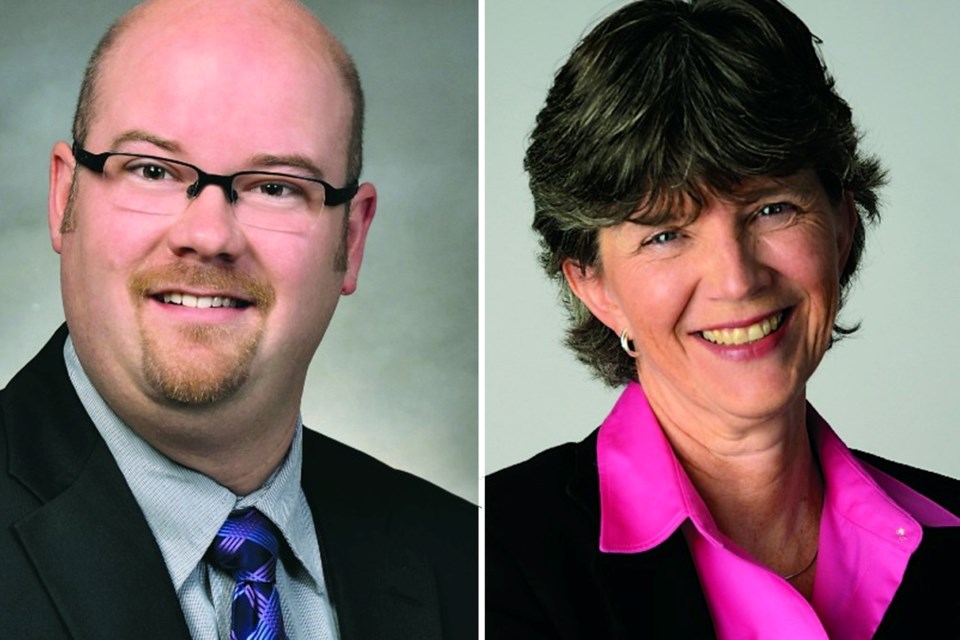In 1982, the re-greening of our community was in the “seedling” stage. Forty years later, blackened rocks are covered by green forests.
With this evidence of how a far-seeing vision — carried out with perseverance, commitment and good planning, can become a reality — city council and the broader community are striving to make decisions toward what our city will look and feel like years from now.
The last two years have been very difficult for many of our citizens and for the people responsible for providing municipal services. Despite this, the municipal team has continued to serve: responding to 911 and 311 calls; caring for the elderly at our long-term care home Pioneer Manor; providing resources to those living without a home; setting up and supporting vaccination clinics; providing transit services, drinking water and treatment of what we flushed; picking up of waste at the end of the driveway; plowing the streets and sidewalks we use and the ones we don’t; and countless other less-visible services on a daily basis.
The longer-term impact of COVID-19 is unknown. Along with the rest of the world, we are already seeing the effects of inflation. Yet we must keep looking to balance the risks and the opportunities while building our city for future generations.
The 2023 budget process begins this month with estimates of what the city thinks future costs might look like. It finishes in the spring of 2024 with the audited 2023 financial statements. The budget lays a foundation not only for 2023, but also for the future some of us hope to see in 40 years.
This two-year process has resulted in improved and more efficient services: more online services; a One Stop Shop at City Hall; more road and bridge work; more sidewalk and cycling spaces; a new GOVA transit system (which has seen a 23-per-cent increase in ridership between 2020-2021); replacement of 100-year old-pipes and new digital water meters; new LED street lights throughout the city; and investments in Housing & Shelter Services.
We are also working to attract new residents through economic development initiatives and the federally funded Rural & Northern Immigration Project. With record low levels of unemployment and a population density rate of only 53 people per square kilometre living in the largest municipality by area in Ontario, this is crucial to our city’s future success.
Currently, our city is in good shape to face what may come:
Our credit rating has been upgraded from AA to AA+ with a Stable Outlook from Standard & Poor’s (S&P) Global Ratings.
As of June 2, 2022 we were named as the least expensive place to live in all of Ontario:
Our unemployment rate in May was at 4.4 per cent and remains below the provincial (5.4 per cent) and national (5.2 per cent, a historic low) averages.
The independent BMA Municipal Study 2021 confirms that we are on the low end of Ontario property taxes for a city with a population over 100,000 (our individual property tax bills are lower per household). See Pg. 308 in this report.
And yes, the city is carrying more debt than in 2014. City council is investing the borrowed funds in renewing our roads, buildings and pipes along with investments in things like Transitional Housing with clinical supports for those suffering from mental health and addiction issues, and in Pioneer Manor to bring 1960-era rooms up to 2022 standards.
For a typical Canadian home, outstanding debt currently represents about 58 per cent of the home’s value.
For the City of Greater Sudbury where the updates/major repairs/replacements can be expensive (e.g., bridges), outstanding debt represents about three per cent of the value of all the city’s assets (roads, buildings, pipes). This is well within the limits set by both the provincial government and city council’s own debt policies.
We have also increased our savings account (reserves) to provide a cushion for unexpected challenges and to take advantage of strategic opportunities that may come our way.
We need to invest in and renew our roads, buildings and pipes so that we can continue to receive the services many of us have come to expect. With these investments, we’re creating opportunities for people to enjoy a lifestyle that builds on what we inherited from prior generations, and to take advantage of new economic development opportunities when they come our way.
For example, since 2014 council has essentially doubled the annual investment in our city’s 3,600 lane kilometres of roads and this spring we added an additional $6 million to our road program.
Yet more must be invested every year.
Collectively, we use all the city’s services, although some, such as police, fire and ambulance service, we hope we never have to use. Because we live in a caring community we share the costs of all services, even the ones we many not use.
We appreciate good decisions our city has made over the last 40 years to get us where we are today. To continue the momentum, we need to focus on our ability to work together, and together move our city toward the future we want to see.
Ward 7 Coun. Mike Jakubo
Finance & Administration Committee Chair
Ward 9 Coun. Deb McIntosh
Finance & Administration Committee Vice Chair
